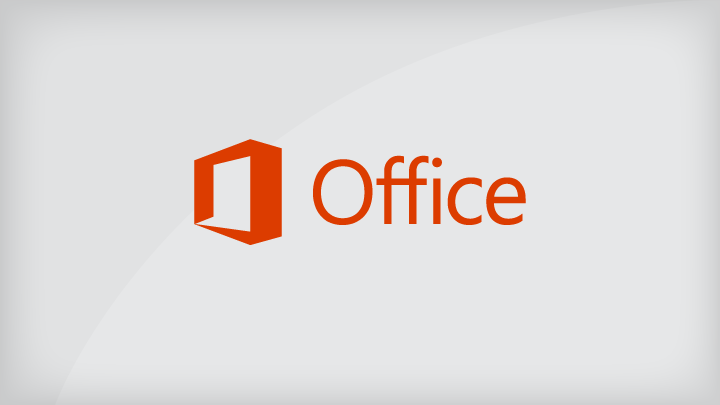Microsoft’s Bold Moves: Navigating the Windows and Outlook Landscape
December 2, 2024, 5:24 pm
Microsoft is steering its ship through turbulent waters. The tech giant has made significant changes that affect millions of users. Windows 11 is now accessible to older PCs, but there’s a catch. Users must sign a waiver, acknowledging the risks. This move is a double-edged sword. It offers flexibility but raises concerns about security and compatibility.
As of October 2025, Windows 10 will no longer receive support. Users will still be able to operate their machines, but they’ll be sailing without a lifeboat. Microsoft previously urged users to upgrade to new devices. The push for Windows 11 is palpable. StatCounter reports that Windows 11 has captured nearly 35% of the desktop market. However, the growth is sluggish. Windows 10 still dominates with over 61% of users. Meanwhile, a small percentage cling to Windows 7, a relic of the past.
In late 2024, Microsoft ramped up its marketing efforts. Banners promoting Windows 11 appeared on Windows 10 desktops. The goal? Accelerate the transition to the new operating system. The company has updated its support page with instructions for installing Windows 11 on unsupported devices. The waiver has been revised, emphasizing user understanding. It’s a clear message: proceed at your own risk.
The waiver warns users that their PCs may not meet the minimum requirements for Windows 11. This could lead to compatibility issues. If users choose to install, they forfeit support and updates. The manufacturer’s warranty? It’s out the window. Microsoft has also provided a recovery tool for those who encounter problems. It’s a safety net, but only if users know how to use it.
Meanwhile, Microsoft is also reshaping its email landscape. The company has decided to roll out support for .pst files in the new Outlook sooner than expected. This is a crucial move as the classic Mail app is set to be retired. The new Outlook is a web-based platform. It lacks some features of its predecessors, but it’s the future.
The classic Outlook allows users to open .pst files, which store local copies of Exchange mailbox items. These files are vital for organizations with limited resources. They help free up mailbox space, a necessity in today’s data-driven world. Initially, Microsoft planned to introduce .pst support in March 2025. Now, the first phase will begin in January 2025. This is a strategic pivot.
The initial rollout will provide read-only access to email items in .pst files. However, users won’t be able to access contacts, tasks, or calendar items just yet. This limitation is a temporary hurdle. Microsoft assures users that these data types remain intact. Future updates will expand .pst support.
For months, Microsoft has been nudging users to transition to the new Outlook. Pop-ups in the Mail and Calendar apps have become commonplace. The deadline looms: old applications will cease to function after December 31, 2024. This is a hard stop, forcing users to adapt.
Microsoft has touted the benefits of the new Outlook. It boasts AI features that assist in drafting emails. It also reminds users to respond to messages. This integration of AI is a game-changer. It promises to streamline communication and enhance productivity.
However, these changes come with challenges. Users accustomed to the classic Outlook may feel disoriented. The transition to a web-based platform can be daunting. Familiarity breeds comfort, and change can be unsettling. Microsoft must ensure that users feel supported during this shift.
The tech landscape is ever-evolving. Microsoft’s decisions reflect a broader trend in the industry. Companies are pushing for modernization, often at the expense of legacy systems. This is a necessary evolution, but it can leave users in the lurch.
As Microsoft navigates these waters, it must balance innovation with user experience. The company is not just selling software; it’s selling trust. Users need to feel confident in their choices. They must believe that the new systems will serve them well.
In conclusion, Microsoft is making bold moves. The decision to allow Windows 11 on older PCs is a gamble. It opens doors but also exposes users to risks. Meanwhile, the transition to the new Outlook is a critical step forward. It’s a chance to embrace the future, but it requires adaptation. Microsoft’s journey is just beginning. The road ahead is fraught with challenges, but the destination promises a more integrated, efficient experience. Users must be ready to embark on this journey, armed with knowledge and a willingness to adapt. The tech world waits with bated breath.
As of October 2025, Windows 10 will no longer receive support. Users will still be able to operate their machines, but they’ll be sailing without a lifeboat. Microsoft previously urged users to upgrade to new devices. The push for Windows 11 is palpable. StatCounter reports that Windows 11 has captured nearly 35% of the desktop market. However, the growth is sluggish. Windows 10 still dominates with over 61% of users. Meanwhile, a small percentage cling to Windows 7, a relic of the past.
In late 2024, Microsoft ramped up its marketing efforts. Banners promoting Windows 11 appeared on Windows 10 desktops. The goal? Accelerate the transition to the new operating system. The company has updated its support page with instructions for installing Windows 11 on unsupported devices. The waiver has been revised, emphasizing user understanding. It’s a clear message: proceed at your own risk.
The waiver warns users that their PCs may not meet the minimum requirements for Windows 11. This could lead to compatibility issues. If users choose to install, they forfeit support and updates. The manufacturer’s warranty? It’s out the window. Microsoft has also provided a recovery tool for those who encounter problems. It’s a safety net, but only if users know how to use it.
Meanwhile, Microsoft is also reshaping its email landscape. The company has decided to roll out support for .pst files in the new Outlook sooner than expected. This is a crucial move as the classic Mail app is set to be retired. The new Outlook is a web-based platform. It lacks some features of its predecessors, but it’s the future.
The classic Outlook allows users to open .pst files, which store local copies of Exchange mailbox items. These files are vital for organizations with limited resources. They help free up mailbox space, a necessity in today’s data-driven world. Initially, Microsoft planned to introduce .pst support in March 2025. Now, the first phase will begin in January 2025. This is a strategic pivot.
The initial rollout will provide read-only access to email items in .pst files. However, users won’t be able to access contacts, tasks, or calendar items just yet. This limitation is a temporary hurdle. Microsoft assures users that these data types remain intact. Future updates will expand .pst support.
For months, Microsoft has been nudging users to transition to the new Outlook. Pop-ups in the Mail and Calendar apps have become commonplace. The deadline looms: old applications will cease to function after December 31, 2024. This is a hard stop, forcing users to adapt.
Microsoft has touted the benefits of the new Outlook. It boasts AI features that assist in drafting emails. It also reminds users to respond to messages. This integration of AI is a game-changer. It promises to streamline communication and enhance productivity.
However, these changes come with challenges. Users accustomed to the classic Outlook may feel disoriented. The transition to a web-based platform can be daunting. Familiarity breeds comfort, and change can be unsettling. Microsoft must ensure that users feel supported during this shift.
The tech landscape is ever-evolving. Microsoft’s decisions reflect a broader trend in the industry. Companies are pushing for modernization, often at the expense of legacy systems. This is a necessary evolution, but it can leave users in the lurch.
As Microsoft navigates these waters, it must balance innovation with user experience. The company is not just selling software; it’s selling trust. Users need to feel confident in their choices. They must believe that the new systems will serve them well.
In conclusion, Microsoft is making bold moves. The decision to allow Windows 11 on older PCs is a gamble. It opens doors but also exposes users to risks. Meanwhile, the transition to the new Outlook is a critical step forward. It’s a chance to embrace the future, but it requires adaptation. Microsoft’s journey is just beginning. The road ahead is fraught with challenges, but the destination promises a more integrated, efficient experience. Users must be ready to embark on this journey, armed with knowledge and a willingness to adapt. The tech world waits with bated breath.

